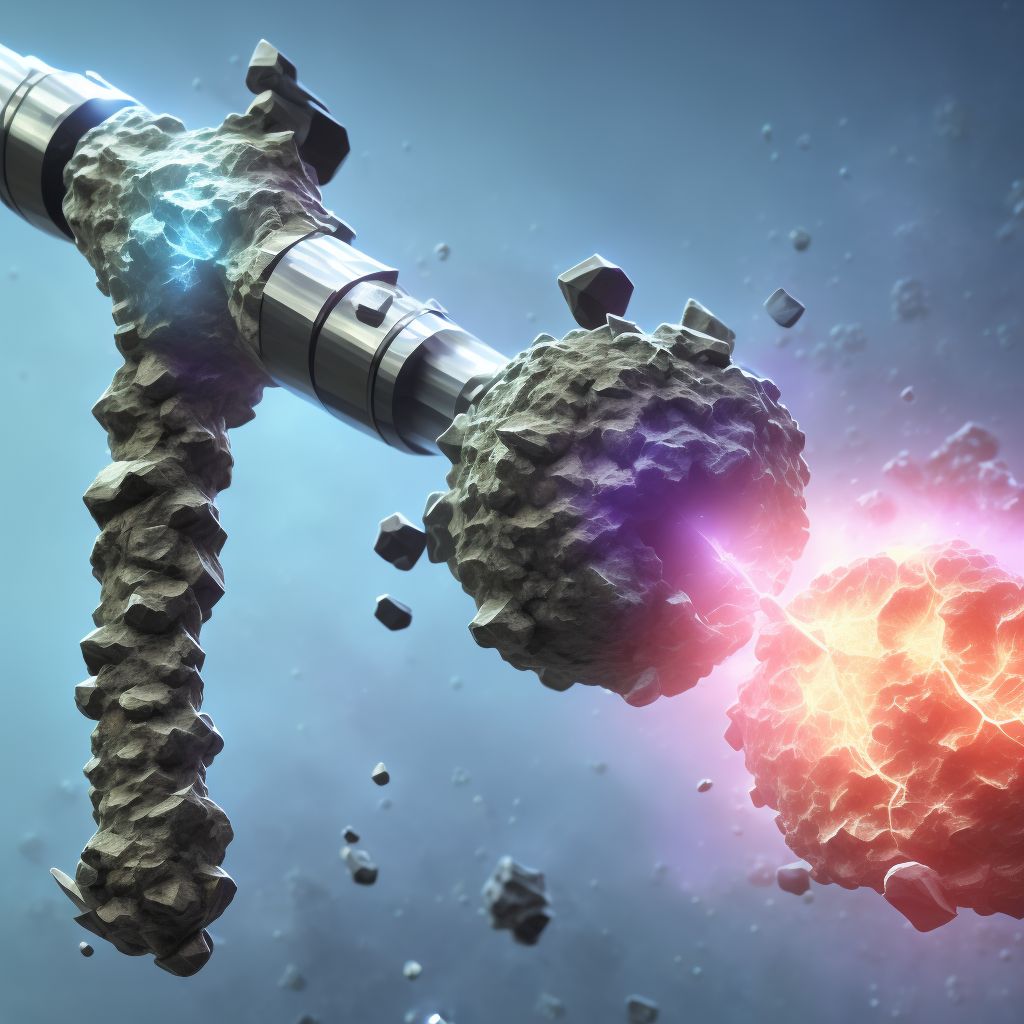
Displaced transverse fracture of shaft of unspecified fibula, subsequent encounter for open fracture type IIIA, IIIB, or IIIC with malunion Save
ICD-10 code: S82.423R
Disease category: S82.423: Displaced transverse fracture of shaft of unspecified fibula
Displaced Transverse Fracture of Shaft of Unspecified Fibula: Understanding the Malunion
Fractures are common injuries that can occur in various bones of the body. One such fracture is the displaced transverse fracture of the shaft of an unspecified fibula. When this fracture fails to heal properly and results in a misalignment, it is referred to as a malunion. In some cases, this condition may require subsequent encounters for open fracture type IIIA, IIIB, or IIIC. Let's delve deeper into understanding this condition and its implications.
When a displaced transverse fracture of the shaft of an unspecified fibula occurs, the bone breaks horizontally across its width. This type of fracture often results from a direct blow or trauma to the leg. If the fracture is not adequately aligned and stabilized during the healing process, it can lead to malunion.
Malunion refers to the improper alignment of the fractured bone during the healing process, causing it to heal in a distorted position. This can result in functional limitations, chronic pain, and reduced mobility in the affected leg.
Subsequent encounters for open fracture type IIIA, IIIB, or IIIC may be necessary if the malunion requires further medical intervention. These encounters typically involve the assessment and management of the malunion, which may include surgical correction or other interventions to improve the alignment and functionality of the fibula.
- Assessment: During subsequent encounters, healthcare professionals will carefully evaluate the malunion, considering factors such as the degree of misalignment, associated complications, and the impact on the patient's overall well-being.
- Treatment Planning: Based on the assessment, a treatment plan will be developed, taking into account the specific needs and circumstances of the patient. This may involve surgical correction, physical therapy, or other interventions aimed at improving the alignment and functionality of the fibula.
- Monitoring and Follow-up: After the initial treatment, regular monitoring and follow-up appointments will be scheduled to ensure that the malunion is healing properly and that the patient's condition is improving. Adjustments to the treatment plan may be made if necessary.
In conclusion, a displaced transverse fracture of the shaft of an unspecified fibula can lead to a malunion if the bone does not heal in the correct alignment. Subsequent encounters for open fracture type IIIA, IIIB, or IIIC may be required to address this condition. If you have experienced this type of fracture and subsequent malunion, it is crucial to seek appropriate medical attention to evaluate and manage your condition effectively.
Treatment of Displaced transverse fracture of shaft of unspecified fibula, subsequent encounter for open fracture type IIIA, IIIB, or IIIC with malunion:
Treatment Options for Displaced Transverse Fracture of Shaft of Unspecified Fibula with Malunion
When it comes to a displaced transverse fracture of the shaft of an unspecified fibula with malunion, there are several treatment options available. The choice of treatment depends on various factors such as the severity of the fracture, the patient's overall health, and their individua...
To see full information about treatment please Sign up or Log in